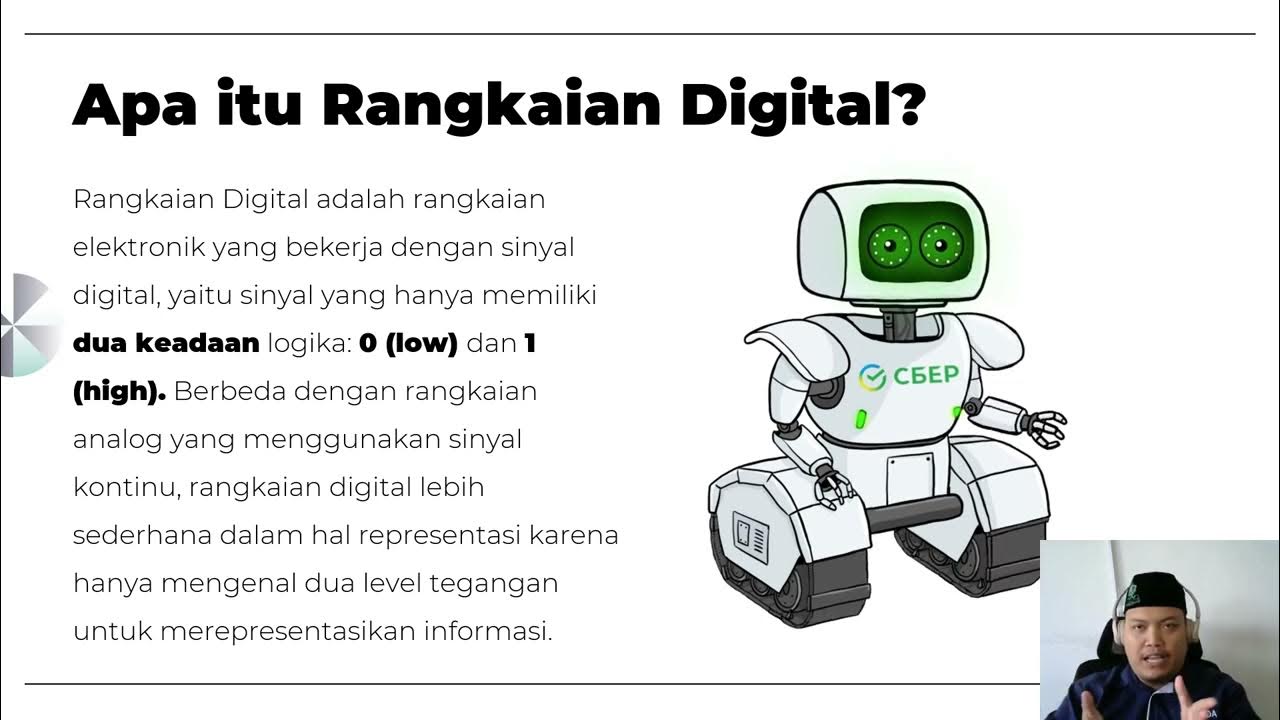CMOS Logic Circuit Design for AND and OR Gate
Summary
TLDRThis video lecture from the integrated circuits series focuses on digital integrated circuit design, specifically latches and flip flops under subject code KEC501. The instructor delves into Boolean expressions and CMOS logic design, building upon the previous lecture's discussion on XOR and XNOR gates. The main content of this session is the CMOS logic design for AND and OR gates, explaining the Boolean expressions for both and showcasing the design process. The presenter encourages viewers to ask questions in the comment section for further clarification.
Takeaways
- 🎓 The video is part of a lecture series on integrated circuits, focusing on digital integrated circuit design, specifically latches and flip flops.
- 📚 The subject code for this lecture series is KEC501, indicating it's part of a structured curriculum.
- 🔍 The lecture delves into Boolean expressions and CMOS logic design, two fundamental concepts in digital electronics.
- 📈 The previous lecture covered CMOS logic design for XOR and XNOR gates, setting a context for the current lecture.
- 📝 Today's lecture will cover CMOS logic design for NAND and OR gates, expanding the knowledge on digital circuit design.
- 🔧 The Boolean expression for an AND gate is given as "y = a · b", which is the basis for its CMOS logic design.
- 🛠️ The CMOS logic design for an AND gate is explained, providing insight into how digital circuits are created.
- 🔄 Similarly, the CMOS logic design for an OR gate will be discussed, showing the versatility of CMOS technology.
- 🔢 The Boolean expression for an OR gate is represented as "y = a + b'", highlighting the use of complements in digital logic.
- 📑 The script promises to show the CMOS logic circuit designs for both AND and OR gates in the following pages of the lecture.
- ❓ The lecturer encourages students to post questions in the comment box for further clarification or discussion.
Q & A
What is the subject of the lecture series mentioned in the video?
-The subject of the lecture series is Integrated Circuits, focusing on Digital Integrated Circuit Design, specifically Latches and Flip Flops.
What is the subject code for the lecture series?
-The subject code for the lecture series is KEC501.
What was discussed in the previous lecture before the one mentioned in the script?
-In the previous lecture, the CMOS logic design for XOR and XNOR gates was discussed.
What will be covered in today's lecture according to the script?
-Today's lecture will cover the CMOS logic design for NAND and OR gates.
What is the Boolean expression for an AND gate?
-The Boolean expression for an AND gate is Y = A . B, where '.' represents the AND operation.
How can one design a CMOS logic circuit for an AND gate?
-A CMOS logic circuit for an AND gate can be designed based on the Boolean expression Y = A . B, using complementary MOSFETs to implement the logic function.
What is the Boolean expression for an OR gate?
-The Boolean expression for an OR gate is Y = A + B, where '+' represents the OR operation.
How can one design a CMOS logic circuit for an OR gate?
-A CMOS logic circuit for an OR gate can be designed using the Boolean expression Y = A + B, with the appropriate arrangement of N-channel and P-channel MOSFETs.
What does 'A . B' represent in the context of the script?
-'A . B' represents the AND operation between inputs A and B in the Boolean expression for an AND gate.
What does 'A + B' represent in the context of the script?
-'A + B' represents the OR operation between inputs A and B in the Boolean expression for an OR gate.
How can viewers ask questions related to the lecture content?
-Viewers can post their questions in the comment box of the video for further clarification or insights.
Outlines

This section is available to paid users only. Please upgrade to access this part.
Upgrade NowMindmap

This section is available to paid users only. Please upgrade to access this part.
Upgrade NowKeywords

This section is available to paid users only. Please upgrade to access this part.
Upgrade NowHighlights

This section is available to paid users only. Please upgrade to access this part.
Upgrade NowTranscripts

This section is available to paid users only. Please upgrade to access this part.
Upgrade NowBrowse More Related Video

Part 5.2 #Latches and #FlipFlops #SequentialCircuits in Digital Electronics in Hindi

FLIP-FLOP - Jenis dan tabel kebenaran

Latch and Flip-Flop Explained | Difference between the Latch and Flip-Flop

Pertemuan 1 - Mata Kuliah Rangkaian Digital- TA 25/26 Ganjil - UNUSIDA

What is a Clock?

Analog Circuits | Introduction of Analog Circuits | AKTU Digital Education
5.0 / 5 (0 votes)